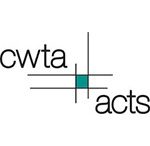Posted: Dec 5 '16
Well, it's been 2 1/2 years since you took Fall Protection training. All those instructor lessons are starting to get foggy...and you might have checked the back of your eyelids once or twice that day 2 1/2 years ago. After all, you didn't take your training at MI Safety and your instructor was booooor-riiiiing, you'd just finished a night shift and besides, you've taken the class umpteen million times already. Just for you folks, here's some common errors our instructors have to correct time and time again (yup, even for you seasoned professionals). These tips can save your life!
So you remember you're supposed to inspect your harness each time you put it on. But remember, harnesses also require an annual inspection. When was your harness last inspected? Is there documentation ON the harness that indicates it's been inspected and is fit for use? If there is no indication on the harness that it has been inspected OR is less than a year old, remove the harness from service. Items checked for in a pre-use inspection include:
- labels are present and legible
- inspect webbing (straps) and stitching for cuts, fraying, pulled or broken threads, abrasion, excessive wear, altered or missing straps, burns, heat and chemical exposures
- inspect metallic parts for deformation, fractures, cracks, corrosion, deep pitting, burrs, sharp edges, cuts, deep nicks, missing or loose parts, improper function and evidence of heat or chemical exposures
- inspect plastic parts for cuts, broken, excessively worn, missing and loose parts, heat or chemical exposure
- inspect each component of subsystem (ie. lanyards).
Yup, we get it. Harnesses aren't the most comfortable accessory. But, the right size worn properly will protect your private parts and your life. If your harness is too loose you can flip right out of it during a fall. Too snug or an incorrect style can result in injuries. Make sure you are wearing the correct size based on the manufacturer's sizing, specific to your height and weight. If your company does not have a harness in your size, request one. Do not grab the next closest size simply because it's all that's available. It is also critical to remember that the Rear D-Ring must be positioned evenly between your shoulder blades. An incorrectly positioned D-Ring can result in incorrect weight distribution and/or incorrect positioning upon falling, resulting in injuries.
Preventing falls is of course the ideal choice. But, you've fallen. You took your Fall Protection training, so you've managed to stay alive so far. Now you're hanging up there by your harness...what next? Before you start working at heights, plan for your future by identifying your Rescue. Generally, calling 911 won't be the answer that will save your life. Often, emergency services are too far away to respond in time to prevent suspension trauma and/or they don't have suitable equipment to perform a timely rescue. Additionally, consideration must be given to the type of worksite. Is it remote? Are there two people working in the area, or many? Is it a large plant, with a rescue team readily available? Will you be required to complete a self-rescue? If your company doesn't have a rescue team or a rescue plan for every possibility, you may want to consider our Fall Rescue course. This course can be 8, 16 or 24 hours in length and designed to suit your site specific requirements. Contact us for more information on fall safety.
REQUEST INFO ON OUR COURSES



